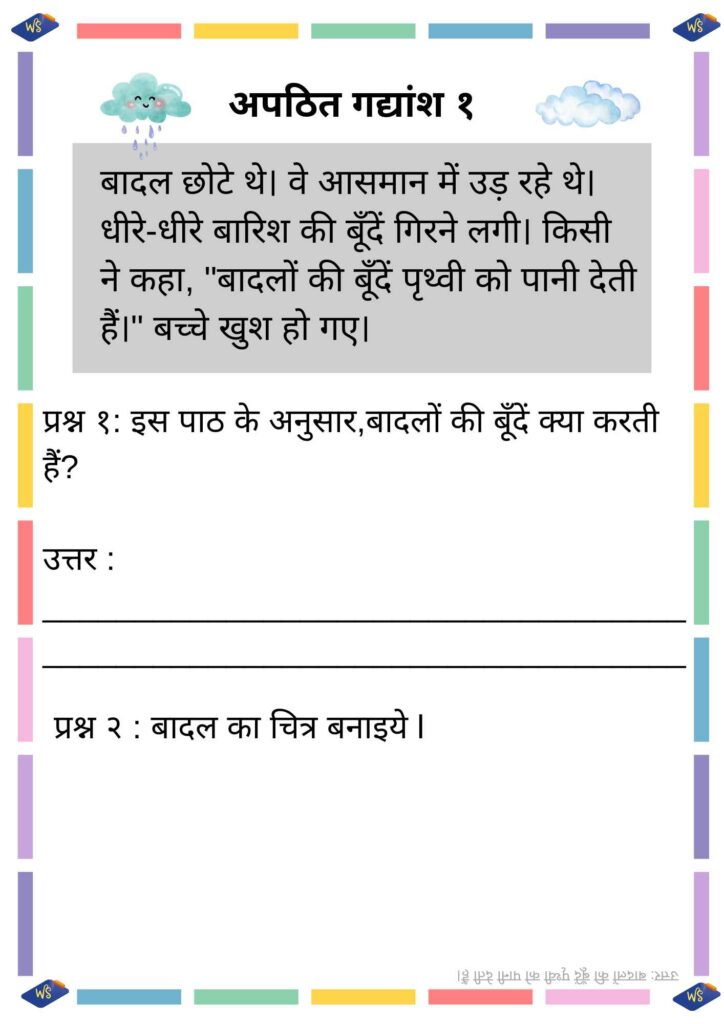Title: Enhancing Reading Skills: Reading Comprehension Passages in Hindi for class 1
In the journey of education, one of the fundamental skills a child learns is reading comprehension. It’s not just about recognizing letters and words but also understanding the meaning behind them. For young learners in Class 1, mastering this skill is essential for their overall academic growth. To facilitate this learning process, incorporating Hindi comprehension passages tailored to their level can be highly beneficial.
Reading comprehension passages serve as effective tools for assessing a child’s understanding of what they read while also expanding their vocabulary and language skills. In this blog post, we’ll explore the significance of Reading Comprehension Passages in Hindi for class 1 students and provide sample passages to aid their learning journey.
Importance of Reading Comprehension for Class 1 Students
1. Language Development: Reading comprehension passages expose students to a variety of words and sentence structures, helping them enhance their language proficiency in Hindi.
2. Critical Thinking: Comprehending a passage requires students to think critically and draw conclusions based on the information provided, fostering cognitive development.
3. Communication Skills: Through reading and understanding passages, students learn how to effectively express themselves verbally and in writing, improving their communication skills.
4. Academic Success: Strong reading comprehension skills are foundational for success in all academic subjects, as they enable students to grasp concepts and instructions across different disciplines.
Sample Reading Comprehension Passages in Hindi for class 1:
1. Passage 1:
The passage describes the joy of witnessing clouds and raindrops, teaching children about the water cycle and the importance of rain for the Earth’s ecosystem.
2. Passage 2:
This passage narrates a playful encounter between a cat and a dancing bird, encouraging children to imagine and engage with the story while developing their comprehension skills.
3. Passage 3:
In this passage, children join in the fun of playing with a large pink balloon, prompting them to visualize the scenario and comprehend the actions described.
4. Passage 4:
The passage portrays a conversation between the Sun and the Moon, stimulating children’s imagination while encouraging them to understand the roles of celestial bodies.
How to Utilize Reading Comprehension Passages in Hindi for class 1:
1. Interactive Reading Sessions: Teachers can conduct interactive reading sessions where students read the passages aloud, followed by discussions on the content and comprehension questions.
2. Vocabulary Building: Teachers can introduce new vocabulary words from the passages and encourage students to use them in sentences, promoting language enrichment.
3. Comprehension Exercises: After reading the passages, teachers can assign comprehension exercises such as answering questions, summarizing the passage, or retelling the story in their own words.
4. Creative Activities: Teachers can incorporate creative activities related to the passages, such as drawing illustrations, role-playing characters, or writing alternative endings, to further engage students and reinforce comprehension.
Conclusion:
In conclusion, reading comprehension is a vital skill that lays the foundation for academic success and lifelong learning. For Class 1 students, exposure to Hindi comprehension passages not only aids in language development but also nurtures critical thinking and communication skills. By integrating such passages into classroom activities and fostering a supportive learning environment, educators can empower young learners to become proficient readers and effective communicators. Let’s embark on this enriching journey of enhancing reading skills and unlocking the potential of our Class 1 students through engaging Hindi comprehension passages. Happy reading!




